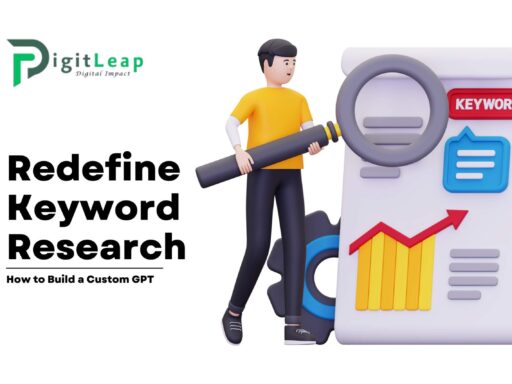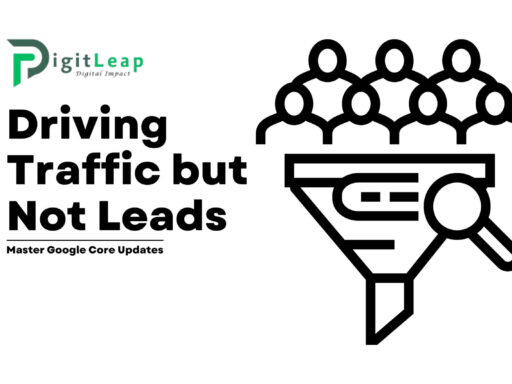Google RSAs in 2024: Everything You Need to Know
Responsive Search Ads (RSAs) have become a central part of Google Ads strategy, and their significance only continues to grow in 2024. Google has shifted more focus to RSAs, making them the default ad type for search campaigns. RSAs offer the flexibility to automatically test various ad combinations and deliver the best-performing ones to users, maximizing the relevance and impact of your ads.
For marketers, this change represents both a challenge and an opportunity. Here’s everything you need to know about Google RSAs in 2024, including best practices, recent updates, and strategies for making the most of this ad format.
What Are Responsive Search Ads (RSAs)?
Responsive Search Ads are a dynamic ad format in Google Ads that allows advertisers to create ads with multiple headlines and descriptions. Google then tests different combinations of these elements to find the optimal versions based on user engagement and relevance.
Instead of creating one static ad, RSAs let you upload up to 15 headlines and four descriptions. Google uses machine learning to combine these variations, showing the ads that are most likely to resonate with each user. This not only improves performance but also saves time as Google automatically optimizes ads for different search queries and audience preferences.
Why RSAs Are Important in 2024
Google has steadily phased out Expanded Text Ads (ETAs), making RSAs the primary option for search campaigns. With this shift, RSAs have become a must-use tool for advertisers aiming to stay competitive on the platform. Here’s why RSAs are essential in 2024:
- Enhanced Relevance: Google’s machine learning tailors RSAs to match user intent more accurately, increasing click-through rates (CTR) and engagement.
- Increased Efficiency: RSAs reduce the manual workload by automating ad optimization, making it easier to test and scale campaigns.
- Alignment with Google’s Automation: Google’s algorithms are increasingly focused on automation, making RSAs a natural fit as they work hand-in-hand with Smart Bidding, audience targeting, and other AI-driven features.
Key Features of RSAs
Understanding how RSAs function will help you create better ads and align with Google’s automation goals. Here are some key RSA features:
- Automated Ad Combinations: Google mixes and matches headlines and descriptions, finding the highest-performing combinations over time.
- Machine Learning Optimization: Google’s machine learning model continuously learns which headlines and descriptions work best for each audience segment.
- Improved CTR and Conversion Rates: By serving ads that are more relevant to user queries, RSAs have the potential to improve CTR and conversion rates, maximizing ad spend.
Setting Up Effective RSAs in 2024
While RSAs offer great potential, getting the most out of them requires a strategic approach. Here’s how to set up RSAs effectively to align with Google’s standards and optimize performance:
1. Use a Variety of Headlines and Descriptions
The key to successful RSAs is variety. Google recommends including diverse headlines and descriptions that emphasize different selling points, keywords, and value propositions.
- Include Keywords: Ensure that some headlines include your main keywords to increase relevance and improve quality scores.
- Highlight Unique Selling Points (USPs): Add headlines that emphasize what makes your product or service unique, such as “Free Shipping” or “24/7 Customer Support.”
- Call to Action (CTA): Encourage users to take action by including CTAs like “Get a Free Quote” or “Shop Now.”
2. Pin Essential Elements Strategically
Google allows you to “pin” specific headlines or descriptions to ensure they appear in a particular position. While this limits Google’s ability to test combinations, it’s helpful if you have certain must-have messages.
- Pin Important Information: Pin key information like your brand name, CTA, or primary selling points to the top positions.
- Avoid Over-Pinning: Too much pinning reduces Google’s flexibility in testing different combinations, which can limit performance. Pin sparingly to maintain RSA’s dynamic nature.
3. Embrace Broad Match Keywords with Smart Bidding
Google recommends pairing RSAs with broad match keywords and Smart Bidding strategies like Target CPA or Maximize Conversions. This combination leverages Google’s AI to match your ads with relevant queries and adjust bids in real time.
- Broad Match for Broader Reach: Broad match keywords allow Google to find more potential matches, expanding your audience reach.
- Smart Bidding: Smart Bidding strategies like Target CPA use real-time data to optimize bids, helping you get the most out of your ad budget.
4. Leverage Google’s Recommendations and Insights
Google Ads offers recommendations based on the performance of your RSAs. These insights can help you refine your ads and increase their effectiveness.
- Responsive Search Ad Asset Reporting: Google’s reports show which headlines and descriptions perform best, providing insights into what resonates with your audience.
- Optimization Score: The optimization score gives suggestions on improving your RSA performance. Follow relevant recommendations, such as “add more headlines” or “include keywords,” to maximize impact.
5. Test and Iterate Regularly
Continuous testing is key to maximizing RSA performance. As Google learns more about your audience’s preferences, it’s crucial to update and refresh your assets regularly.
- Monitor Asset Performance: Review how each asset performs in terms of impressions, CTR, and conversions. Adjust or replace underperforming assets to keep ads relevant.
- Introduce Seasonal Variants: Update headlines and descriptions to reflect seasonal trends, special promotions, or new offerings. This keeps your ads fresh and relevant.
Best Practices for RSAs in 2024
With Google’s increased emphasis on RSAs, following best practices is more important than ever. Here are some additional tips to make your RSAs stand out:
- Keep Messaging Consistent Across Channels: Ensure that your RSAs align with the messaging in other marketing channels. Consistent branding strengthens your ad’s impact and fosters trust with potential customers.
- Use Headlines of Different Lengths: Google can display headlines of various lengths depending on the device and search query. Including short and long headlines provides more flexibility in ad displays.
- Focus on Ad Strength: Google scores RSA strength as “Poor,” “Good,” or “Excellent.” Aim for an “Excellent” ad strength score by following Google’s recommendations for asset diversity and keyword relevance.
- Utilize Negative Keywords: To avoid irrelevant impressions, add negative keywords to your campaigns. This helps filter out unrelated queries and improves the quality of traffic reaching your ads.
Tracking RSA Performance Metrics
Keeping an eye on performance metrics will help you understand how your RSAs are doing and where improvements are needed. Key metrics to track include:
- Click-Through Rate (CTR): A high CTR indicates that your RSAs are relevant and engaging. Compare CTRs across different RSA combinations to see which headlines and descriptions work best.
- Conversion Rate: Track how many users are completing desired actions after clicking your RSA. This shows whether your ad’s messaging is effectively driving conversions.
- Quality Score: Google’s Quality Score is a measure of ad relevance, expected CTR, and landing page experience. A high Quality Score improves your ad rank and lowers your cost per click.
- Impressions and Reach: Monitor impressions to see how often your ads appear. High impressions mean broad visibility, which can drive brand awareness and traffic.
Challenges and Considerations with RSAs
While RSAs are highly effective, they do come with some challenges. Here’s what to keep in mind:
- Limited Control Over Combinations: Since Google determines which combinations to show, advertisers have less control over the final ad display. Pinning can mitigate this but limits the testing potential.
- Learning Curve for Machine Learning: Google’s algorithms may take some time to learn which combinations work best. Be patient and allow the system to optimize.
- Dependence on Google’s AI: With RSAs relying heavily on machine learning, there’s a greater dependency on Google’s AI. This means that ad performance may fluctuate if Google’s algorithms change.
Future Trends for Google RSAs in 2024
As automation continues to grow in importance, Google is likely to refine RSAs with even smarter machine learning features. Here are some trends to watch:
- Enhanced Audience Targeting: Google may integrate more granular audience insights into RSAs, allowing advertisers to target specific user segments with customized ad variations.
- Expanded Use of AI for Predictive Performance: Google could use predictive analytics to provide suggestions on asset combinations or help advertisers create assets based on top-performing patterns.
- Better Integration with Video and Image Assets: As visual content grows in popularity, Google may offer more multimedia options in RSAs, blending text, images, and possibly video to enhance user engagement.
Conclusion
Responsive Search Ads have become a powerful tool for advertisers, offering a streamlined way to create, test, and optimize ads in real time. By understanding how to use RSAs effectively—through varied headlines, smart bidding, regular testing, and close performance monitoring—you can make the most of this ad format and stay ahead in the competitive world of Google Ads.
At Digit Leap, we specialize in helping businesses navigate the complexities of digital advertising, including Google RSAs. Our expertise ensures that your ads are optimized to reach the right audience and maximize your ROI. Let’s redefine your ad strategy with cutting-edge RSA techniques designed to drive results.
FAQs
Q1. How many headlines and descriptions should I use in my RSA?
Google recommends using all 15 headlines and four descriptions to give the machine learning model more flexibility in testing combinations.
Q2. How often should I update my RSA assets?
It’s best to refresh assets every few months or whenever there’s a change in product offerings, seasonal promotions, or audience preferences.
Q3. Can I still use Expanded Text Ads (ETAs) in 2024?
Google has phased out ETAs as the primary ad format, so RSAs are now the main option for search campaigns. However, existing ETAs will still run.
Q4. Does Google prioritize RSAs over other ad formats?
Yes, Google is pushing RSAs as the default ad format for search campaigns, and they work well with Smart Bidding and audience targeting.
Q5. What should I do if my RSA performance drops?
Check asset performance, refresh underperforming headlines and descriptions, and review Google’s optimization recommendations to identify areas for improvement.






